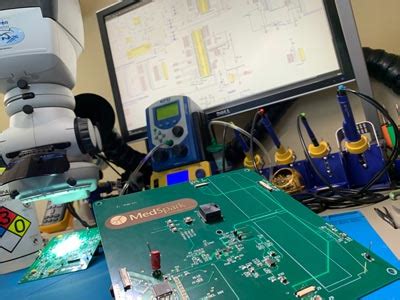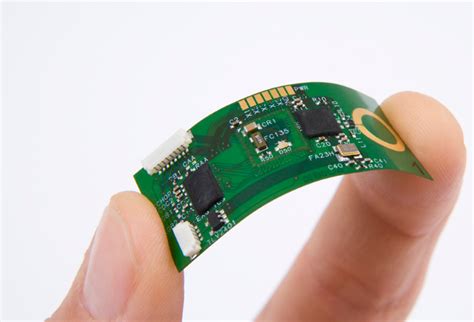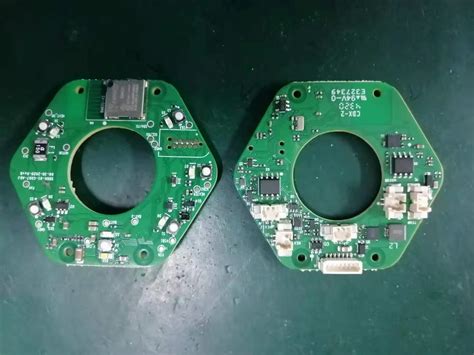Hdi flex pcb
Understanding the Advantages of HDI Flex PCBs in Modern Electronics
High-Density Interconnect (HDI) flexible printed circuit boards (PCBs) have emerged as a pivotal component in the evolution of modern electronics, offering a multitude of advantages that cater to the ever-increasing demands for miniaturization, performance, and reliability. As electronic devices continue to shrink in size while expanding in functionality, the role of HDI flex PCBs becomes increasingly significant. These advanced circuit boards are designed to accommodate complex circuitry within a compact footprint, making them indispensable in a variety of applications ranging from consumer electronics to aerospace technology.
One of the primary advantages of HDI flex PCBs is their ability to support higher wiring density.
By utilizing finer lines and spaces, smaller vias, and capture pads, these PCBs can integrate more components into a smaller area. This capability is crucial in the development of compact devices such as smartphones, tablets, and wearable technology, where space is at a premium. The increased density not only allows for more functionality but also enhances the electrical performance by reducing the length of the signal paths, thereby minimizing signal loss and improving overall efficiency.
In addition to their compactness, HDI flex PCBs offer superior flexibility, which is a critical factor in applications where the circuit board must conform to a specific shape or endure dynamic movements.
This flexibility is achieved through the use of flexible substrates, such as polyimide, which can bend and twist without compromising the integrity of the electrical connections. This characteristic is particularly beneficial in industries like automotive and medical devices, where circuits must adapt to complex geometries or withstand repetitive motion.
Moreover, HDI flex PCBs contribute to improved thermal management, a vital consideration in high-performance electronic devices.
The design of these PCBs allows for better heat dissipation, which is essential in preventing overheating and ensuring the longevity of the components. By incorporating thermal vias and strategically placing components, HDI flex PCBs can effectively manage heat distribution, thereby enhancing the reliability and durability of the device.
Another significant advantage of HDI flex PCBs is their potential for cost savings in the long run.
Although the initial manufacturing costs may be higher due to the complexity of the design and materials used, the benefits of reduced size, weight, and component count can lead to substantial savings in assembly and material costs. Furthermore, the enhanced performance and reliability of devices using HDI flex PCBs can result in lower maintenance and repair costs over time.
The versatility of HDI flex PCBs also extends to their ability to support advanced technologies such as microvia technology and blind and buried vias, which further enhance their capability to handle complex designs. This adaptability makes them suitable for a wide range of applications, from high-speed data transmission in telecommunications to precision control systems in industrial automation.
In conclusion, the advantages of HDI flex PCBs in modern electronics are manifold, encompassing increased wiring density, superior flexibility, improved thermal management, and potential cost savings. As the demand for smaller, more powerful, and reliable electronic devices continues to grow, the role of HDI flex PCBs will undoubtedly become even more critical. Their ability to meet the challenges of modern electronic design makes them an indispensable component in the advancement of technology across various industries.

Design Considerations for HDI Flex PCBs: Best Practices and Tips
When designing High-Density Interconnect (HDI) flexible printed circuit boards (PCBs), several critical considerations must be taken into account to ensure optimal performance and reliability. HDI flex PCBs are increasingly popular in advanced electronics due to their ability to accommodate complex circuitry in compact spaces, offering both flexibility and high interconnect density. As such, understanding the best practices and tips for designing these intricate components is essential for engineers and designers.
To begin with, one of the primary considerations in HDI flex PCB design is the selection of appropriate materials.
The choice of substrate material significantly impacts the board’s flexibility, thermal performance, and overall durability. Polyimide is a common choice due to its excellent thermal stability and flexibility, making it suitable for applications that require bending and folding. Additionally, the copper foil used in the circuitry must be carefully selected to balance conductivity with flexibility. Thinner copper layers are often preferred to enhance the board’s pliability, although this may require additional considerations in terms of current-carrying capacity.
Transitioning to the layout design, it is crucial to optimize the placement of components and routing of traces to minimize stress on the flex areas.
Designers should aim to distribute components evenly and avoid placing them near bend areas to prevent mechanical stress and potential failure. Moreover, using curved traces instead of sharp angles can help reduce stress concentrations, thereby enhancing the board’s reliability. It is also advisable to incorporate tear stops and fillets at the corners of cutouts to prevent tearing during flexing.
Another important aspect is the stack-up configuration, which involves determining the number of layers and their arrangement.
In HDI flex PCBs, the stack-up must be carefully planned to achieve the desired electrical performance while maintaining flexibility. Utilizing microvias and blind/buried vias can help increase interconnect density without compromising the board’s flexibility. However, it is essential to ensure that the via structures are robust enough to withstand repeated flexing, which may involve reinforcing them with additional plating or using advanced via filling techniques.
Thermal management is another critical consideration in HDI flex PCB design.
Due to the compact nature of these boards, heat dissipation can be a challenge, particularly in high-power applications. Designers should incorporate thermal vias and heat spreaders to facilitate efficient heat transfer away from critical components. Additionally, selecting materials with high thermal conductivity can aid in managing heat effectively.
Signal integrity is also paramount in HDI flex PCB design, especially for high-speed applications.
To maintain signal integrity, it is important to control impedance and minimize crosstalk between traces. This can be achieved by carefully designing the trace width, spacing, and layer stack-up. Employing differential pairs and maintaining consistent trace geometry can further enhance signal performance.
Finally, manufacturability should always be considered during the design phase.
Collaborating with manufacturers early in the design process can help identify potential challenges and ensure that the design is feasible for production. This collaboration can also provide insights into cost-effective design choices and help streamline the transition from design to manufacturing.
In conclusion, designing HDI flex PCBs requires a comprehensive understanding of material properties, layout optimization, stack-up configuration, thermal management, and signal integrity. By adhering to these best practices and tips, designers can create reliable and high-performance HDI flex PCBs that meet the demands of modern electronic applications.

Applications of HDI Flex PCBs in Wearable Technology
High-Density Interconnect (HDI) flexible printed circuit boards (PCBs) have become a cornerstone in the advancement of wearable technology, offering a multitude of applications that enhance both functionality and user experience. As the demand for more compact, efficient, and versatile electronic devices continues to grow, HDI flex PCBs provide an ideal solution due to their unique properties and capabilities.
One of the primary applications of HDI flex PCBs in wearable technology is in the development of smartwatches.
These devices require a compact design to fit comfortably on the wrist while still offering a wide range of functionalities, such as fitness tracking, heart rate monitoring, and connectivity features. HDI flex PCBs enable the integration of multiple components within a limited space, allowing for the miniaturization of the device without compromising performance. The flexibility of these PCBs also facilitates the design of curved and ergonomic shapes, enhancing the aesthetic appeal and comfort of smartwatches.
In addition to smartwatches, HDI flex PCBs are instrumental in the creation of fitness trackers.
These devices are designed to be lightweight and unobtrusive, often worn continuously by users to monitor various health metrics. The thin and flexible nature of HDI flex PCBs allows for seamless integration into the slim profiles of fitness trackers, ensuring that they remain comfortable during prolonged use. Moreover, the durability of these PCBs ensures that the devices can withstand the rigors of daily wear, including exposure to sweat and movement.
Furthermore, HDI flex PCBs are pivotal in the development of smart clothing, an emerging sector within wearable technology.
Smart clothing incorporates electronic components directly into the fabric, enabling functionalities such as biometric monitoring, temperature regulation, and even interactive features. The adaptability of HDI flex PCBs makes them ideal for this application, as they can be embedded into textiles without adding significant weight or bulk. This integration allows for the creation of garments that are both functional and comfortable, paving the way for innovative applications in sports, healthcare, and fashion.
Another significant application of HDI flex PCBs is in the realm of medical wearables.
Devices such as continuous glucose monitors and wearable ECGs rely on precise and reliable electronic components to provide accurate health data. HDI flex PCBs offer the necessary precision and reliability, ensuring that these medical devices deliver consistent performance. Their flexibility also allows for the design of devices that conform to the body, improving patient comfort and compliance.
Moreover, the use of HDI flex PCBs extends to augmented reality (AR) and virtual reality (VR) headsets, which are becoming increasingly popular in both consumer and professional settings. These headsets require complex circuitry to support high-resolution displays and advanced sensors, all within a compact form factor. HDI flex PCBs facilitate this complexity by enabling high-density component placement and efficient signal routing, contributing to the overall performance and user experience of AR and VR devices.
In conclusion, the applications of HDI flex PCBs in wearable technology are vast and varied, driven by their ability to support miniaturization, flexibility, and reliability. As wearable technology continues to evolve, the role of HDI flex PCBs will undoubtedly expand, offering new possibilities and innovations in the design and functionality of wearable devices. Their contribution to the field is indispensable, ensuring that wearables remain at the forefront of technological advancement.

Challenges and Solutions in Manufacturing HDI Flex PCBs
The manufacturing of High-Density Interconnect (HDI) flexible printed circuit boards (PCBs) presents a unique set of challenges and solutions that are critical to the advancement of modern electronics. As the demand for smaller, lighter, and more efficient electronic devices continues to grow, HDI flex PCBs have become increasingly important due to their ability to support complex circuitry in compact spaces. However, the intricate nature of these boards introduces several manufacturing challenges that require innovative solutions.
One of the primary challenges in manufacturing HDI flex PCBs is the precise alignment required during the fabrication process.
The miniaturization of components and the need for high-density interconnections necessitate exact alignment to ensure functionality and reliability. Misalignment can lead to circuit failures, which are costly and time-consuming to rectify. To address this, manufacturers employ advanced laser drilling and imaging technologies that enhance precision. These technologies allow for the accurate placement of microvias and fine lines, which are essential for the high-density nature of HDI flex PCBs.
Another significant challenge is the material selection for HDI flex PCBs.
The materials used must be flexible enough to accommodate bending and folding while maintaining electrical integrity. Traditional rigid PCB materials are unsuitable for this purpose, necessitating the use of specialized flexible substrates such as polyimide. However, these materials can be more expensive and difficult to handle. To mitigate these issues, manufacturers are exploring cost-effective alternatives and developing new composite materials that offer the necessary flexibility and durability without compromising performance.
Thermal management is also a critical concern in the manufacturing of HDI flex PCBs.
The compact design of these boards can lead to increased heat generation, which, if not properly managed, can affect the performance and lifespan of the device. Effective thermal management solutions are essential to dissipate heat efficiently. Manufacturers are incorporating advanced thermal interface materials and designing innovative heat dissipation structures to address this challenge. These solutions help maintain optimal operating temperatures, ensuring the reliability and longevity of the electronic devices.
Furthermore, the complexity of HDI flex PCBs requires sophisticated testing and quality assurance processes.
Traditional testing methods may not be sufficient to detect defects in such intricate designs. As a solution, manufacturers are adopting advanced testing techniques, including automated optical inspection (AOI) and X-ray inspection, to ensure the integrity of the boards. These methods provide a comprehensive analysis of the PCB, identifying potential issues before they lead to failures in the field.
In addition to these technical challenges, the manufacturing of HDI flex PCBs also involves economic considerations.
The high cost of materials and advanced manufacturing processes can make these boards more expensive than traditional PCBs. To address this, manufacturers are investing in research and development to streamline production processes and reduce costs. By optimizing manufacturing techniques and leveraging economies of scale, they aim to make HDI flex PCBs more accessible to a broader range of applications.
In conclusion, while the manufacturing of HDI flex PCBs presents several challenges, innovative solutions are continually being developed to overcome these obstacles. Through advancements in precision alignment, material selection, thermal management, testing, and cost reduction, manufacturers are enhancing the capabilities and applications of HDI flex PCBs. As technology continues to evolve, these solutions will play a crucial role in meeting the demands of the ever-growing electronics industry.







